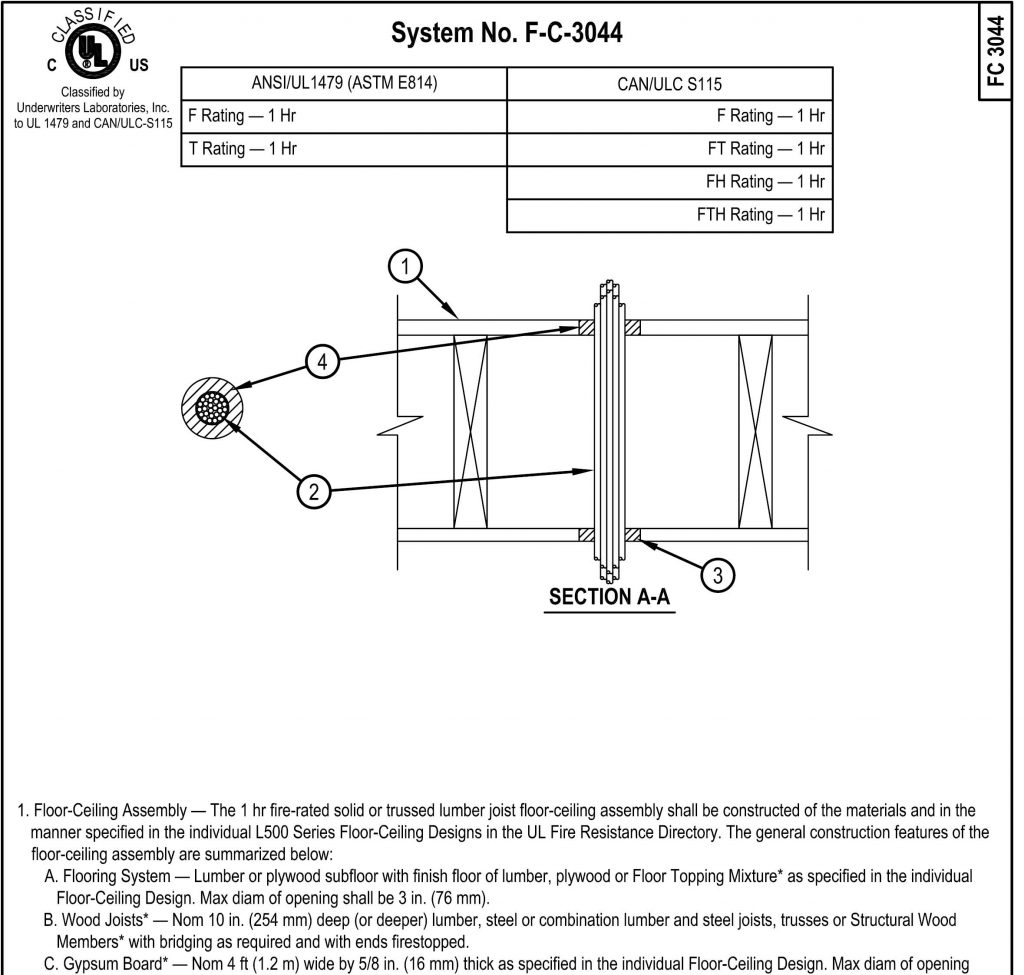How Can We Help?
Firestops and firestopping
Fire stops continue to be one of the more challenging aspects of commercial and large-scale building - but they don't have to be. Like any other building technique, a few basic concepts go a long way.
What is a fire stop?
In many commercial buildings, walls or ceilings/floors are required to have a fire-resistance rating. In simple terms, this means that these walls/ceilings must be able to withstand direct contact with fire for a specified period of time. The intent is that if a fire does start in a building, there is enough time for the occupants of the structure to escape.
In order to achieve the required fire resistance rating, a wall or ceiling/floor has to be built - or assembled - in a specific way. In fact, building Code parlance for a wall or floor of this nature is "assembly." There are hundreds of different, rigorously tested combinations of materials, each of which can be assigned a specific fire-resistance rating. In our area, most buildings that require fire-rated assemblies feature 45-minute or 1-hour fire resistance ratings.
The thing is, it's almost impossible to build without punching holes through floors or walls. It's how plumbing and electrical services are provided to the rooms in a building. These holes essentially create weak spots in a fire-rated assembly.
A fire stop is a designated system of materials designed to restore the fire-resistance rating of an assembly. This means a fire stop is not one item - it's a series of items added together. For example, the fire stop assembly for a single cable penetrating a 45-minute fire-rated wall will include the Type X gypsum on both sides, the wood studs framing the wall, the cable (including what the cable is made of and its diameter) and the material used to seal that cable, such as a fire-stop caulk or a putty pad.
It’s also important to note that different products have different intended uses. There is no one do-it-all fire stop product.
Have ten minutes? This video will help explain fire stops.
This cannot be stressed enough: a fire stop is NOT simply the process of taking a material purchased at a hardware store and squirting it around a penetration in a fire-rated assembly.
a fire stop is NOT simply the process of taking a material purchased at a hardware store and squirting it around a penetration in a fire-rated assembly.
Example: We have had a number of challenges with contractors using a readily available product supplied in many hardware stores to seal openings around plastic pipes or electrical outlet boxes. Unfortunately, the product is intended to seal seal gaps between gypsum (drywall) walls and the underside of concrete floor systems. It was not intended to seal around pipes or electrical outlets. Naturally, our inspectors asked for the improper product to be removed and a correct fire-stop system to be installed at the contractors' expense.
What makes a system
A fire stop system is comprised of:
- The wall or floor where the opening occurs, and how that wall/floor is built
- The size of the opening
- the material or materials going through the wall or floor
- The materials being used to restore the fire separation's integrity.

In other words, inspectors can only approve a specific system - a specified combination of all of the above - once it has been compared to a list of tested systems to see if it meets the requirements of the required fire-resistance rating.
How to specify a system
In some of our permits, we will insert language in either a plans review or as part of the permit stating, "fire stop assemblies must be approved before use," or something to the same effect.
This is our office's attempt to make sure a fire stop is done right, the first time.
There are several websites that will assist a contractor in navigating the complex world of specifying a system.
Hilti's fire-stop submittal portal
Metacaulk's fire stop submittal portal

Not surprisingly, each of these portals promotes the use of brand-specific products in ULC-approved systems. However, they are all relatively easy to use and in a short period of time, a contractor can determine what products they need to use and how to use them (a system). We will wish to know what system is being used (print it off, send it as a .pdf) in order to approve it.
Each of these portals will guide the user through a selection process that will produce a diagram and instructions to create a suitable fire stop system for a specific need.
Want to learn more?
STI's "Firestop university" There is a one-hour course, consisting of six videos that are quite comprehensive. It's free, but do be cautious: the course refers to some U.S. Codes that do not apply here.
